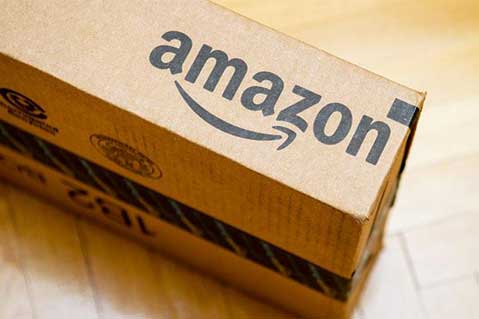February 26, 2018
Amazon Starts Delivery Service For Businesses
Amazon recently announced plans to launch a delivery service for businesses – a potential threat to shippers like UPS, FedEx and the U.S. Postal Service, some analysts say.
The new service – “Shipping with Amazon” (SWA) – is expected to roll out in Los Angeles within the coming weeks with third-party merchants that sell goods via the Seattle-based company’s website. Amazon aims to expand the service to accommodate other businesses in more cities as soon as later this year, The Wall Street Journal reported.

The online retail company is expected to be able to offer lower prices than UPS and FedEx because it already delivers some of its own packages in at least 37 cities in the United States. SWA, which was previously tested and rolled out in London, would send Amazon drivers to pick up shipments from warehouses and businesses, and then deliver the packages to customers. For shipments outside Amazon’s delivery reach, the U.S. Postal Service and other carriers will take the package to its final destination.
With shipping costs as a percentage of sales rising every year since 2009, the company could save $1.1 billion annually if it stopped using UPS and FedEx, according to Citigroup Inc. analysts. Keeping packages under its own control over longer distances could save Amazon around $3 or more on a typical delivery. The average cost to ship a package via UPS or FedEx is $7.81.
“We’re always innovating and experimenting on behalf of customers and the businesses that sell and grow on Amazon to create faster lower-cost delivery choices,” an Amazon spokeswoman said in a statement.
Since 2013, Amazon has been building out its logistics network after it missed deliveries during the holiday season, according to WSJ’s sources. As e-commerce has continued to grow, Amazon executives found that existing carriers couldn’t keep up with the volume. So, Amazon has assembled a network of its own drivers, expanded into ocean freight and leased up to 40 aircraft while establishing its own air cargo hub. In addition, Amazon has prepared for a drone-filled future, filing for a patent for towers that would serve as multi-level fulfillment centers for its delivery drones.
In 2017, Amazon tested an invitation-only program that would not only provide sellers with more efficient storage and shipping options but also allow merchants to add Amazon's software and logistics into their own warehouses. FBA Onsite (Fulfillment by Amazon) invites third-party sellers to send their stock of products to Amazon’s warehouses for storage and then expedited shipping similar to the Amazon Prime service, Bloomberg reported.
While Amazon’s track record indicates that it’s a force to be reckoned with (FedEx's shares have fallen nearly 10% over the past month), financial analysts are trying to calm the market’s fears. Amazon doesn’t have the capacity or equipment yet to handle extra shipments at a massive scale, analysts argue, and the company hasn’t shown clear signs that it’s willing to invest enough to do so. “The trigger we’ve consistently looked for from the company as a warning signal has been asset commitment,” wrote Citigroup analyst Christian Wetherbee. “To date, the company hasn’t made a meaningful push into the true transportation asset ownership we believe is necessary to be a competitor.”
In a note to clients, JPMorgan analyst Brian Ossenbeck suggested that the U.S. Postal Service rather than UPS or FedEx is the “primary company at risk.” "Postal workers are unionizing and Amazon Flex drivers can also provide premium products and services such as perishable goods and same day deliveries,” Ossenbeck wrote.
Amazon’s current partners – and potential rivals – have not expressed concern as of yet. A UPS spokesman told WSJ that UPS continues to support Amazon and other customers, and doesn’t comment on customers’ business strategies or decisions regarding using UPS services. FedEx simply showed a video on its website that outlines the size, scope and expertise of its global delivery network. On a FedEx earnings call in December, executives were asked what would happen if Amazon started competing for its shipping business; their reply was that they “don’t address hypotheticals.”
